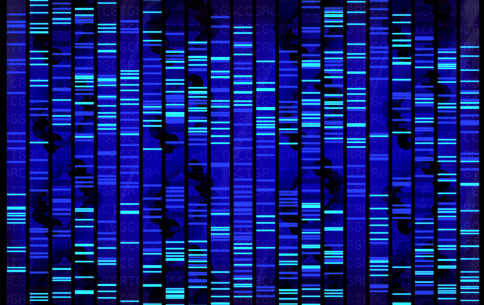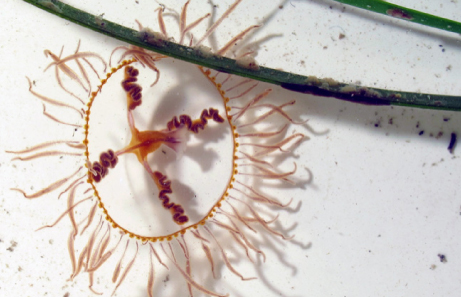
1. Keeping cows from getting infections is costing us: According to a recent study from The New England Journal of Medicine, Americans use more than 100,000 pounds of antibiotics every day. The kicker isn't the size of that number; it's where all those antibiotics are going — into animals, not humans. About 80% of all antibiotics produced end up in the stomachs of cows, pigs, chickens and other livestock. Barnyard environments with plenty of mud, warmth and cow pies are among the most fertile feeding nurseries of bacteria and it is there that we are losing the power of our drugs. In feedlots across America, bacteria are evolving to become resistant to the drugs developed to make people live longer lives. People consume most of the rest of the antibiotics produced, and a small percentage is consumed by farmed fish and our pets.
2. I'll have nine teaspoons of that poison in my cola, please: Researchers established decades ago that sugar is bad for humans. That's why the cola industry switched to artificially sweetened drinks way back in the 1970s — they could no longer sell sugared drinks. The fear of sugar that had developed then has apparently been forgotten or not taught to more recent generations of Americans. And it's killing them again.
A recent study published in Internal Medicine, a journal of the American Medical Association, found that people who get about a fourth of their daily calories from sugar — which includes the vast majority of Americans — have double the risk of heart disease as those who get 7% of their calories from sugar. People whose sugar consumption is 19% of their calories have a 38% increased risk of heart disease. Heart disease is a broad term that includes hardening of the arteries, stroke, heart attack, arrhythmia, and bad valves. The term "heart disease" can be misleading because it sounds like something that can be cured, and in most cases, it cannot be cured. When the risk of getting heart disease doubles, so does the risk of heart attack. The study was conducted by a scientist at the U. S. Centers for Disease Control and Prevention, and it is the only research into sugar that has ever controlled for factors such as weight, age, general health, diet and exercise, leaving sugar as an isolated risk no matter how old you are or what condition you're in. Separately, the study found that consuming just one sugared drink a day raises the risk of heart disease significantly.
Sugar consumption tends to increase your weight and often causes high blood pressure. It also tends to raise triglyceride levels in the blood as well as LDL, the bad cholesterol. Sugar can cause fatty liver disease and is strongly linked to the onset of Type 2 diabetes. The human body requires not one bit of sugar in the diet.

"We might be chasing ghosts," says researcher Marcelo A. Nobrega after proving that the IRX3 gene was inside another gene about half a million base pairs away from the switches that actually turn it on. "We think of the genome as a linear thing, but it's really a complex 3-D structure that coils back onto itself," he says, warning that "there may be many other cases where people are studying the wrong gene."
3. What do you mean we've got the wrong gene? If you've ever wondered why developing a drug has to be so expensive, imagine what is going on in labs around the world, where scientists have been trying to figure out how to make a diet pill that turns off FTO, the so-called fat gene discovered seven years ago. In the midst of these efforts comes a study from Marcelo A. Nobrega and Scott Smemo at the University of Chicago, who say, no, you've got it wrong, the real fat gene is elsewhere in our DNA, and it is IRX3. As far back as 2007, researchers were certain they had found the gene that causes a protein to be released that makes people fat. But working with mice, the two Chicago researchers, plus associates in Spain and Canada, showed that deleting the IRX3 gene makes it very difficult to come up with a fat mouse no matter what you feed it. The gene is also thought to affect the hypothalamus in the brain, which controls metabolism and whether or not a person feels satisfied after eating. So now the race for a different diet pill must start over.
4. Imagine: a government agency that sponsors competition: NASA may eventually get the credit for taking the fat out of space launches. By promoting a competition for delivery of cargo and people to the International Space Station and picking SpaceX and Orbital Sciences as the winners, NASA apparently has put pressure on the older giants of space, Boeing and Lockheed Martin. Now Lockheed Martin is offering a "re-flight or refund" policy if its missions on the tip of an Atlas 5 rocket should fail. The Atlas 5 is extraordinarily reliable and powerful, but using it to launch projects like satellites has become something only governments seem able to afford now that Orbital and SpaceX can do it for at least 30% less. Meanwhile, as Orbital gets better and better at building satellites and has just announced its new GEOStar-3 telecommunications satellite platform, Lockheed says it is working to get its A2100 telecommunications satellite platform down in cost by up to 35%. The space race is going discount.

Global wind power capacity has doubled from 2009 to 2013.
5. Maybe it doesn't matter who has the most wind: Maybe it matters who builds the most wind turbines. The numbers for wind power in 2013 are just tallied, and China leads with more than 75,000 megawatts produced by spinning blades. The United States is second, with just a bit more than 60,000 megawatts, and Germany, which has even more wind-power projects in the works, comes in at 31,000 megawatts, followed by Spain with nearly 23,000 megawatts. India is fifth at 18,000 megawatts. By comparison, a typical U.S. coal-fired power plant produces 650 megawatts of power. The global capacity of power produced from wind is increasing at an increasing rate each year. Total capacity has doubled since 2009.

The "clinging jellyfish's" 90-some tentacles that align its transparent bell are often found clinging to seaweed or eelgrass; they are colored orange, red or violet if female and yellow-brown if male.
6. A clinging attachment only causes pain: If you're planning to swim along the East Coast from Maine to North Carolina this summer, you should be alert to a Pacific Ocean species of jellyfish invading Atlantic waters: Gonionemus vertens. It's not big — just 1-3 inches across — but it packs a punch. Dubbed the "clinging jellyfish" by field biologists, this nettle is round and beautiful and trails up to 90 tentacles. Those who run into one say each tentacle can feel like a hypodermic needle. The stings also add up, affecting breathing, joints and skin. A researcher for the Woods Hole Oceanographic Institution who was stung last summer discovered she wasn't the only victim.
Reports of the jellies came from as far away as New York and New Hampshire waters. She suspects the species could be expanding along the East Coast. Very little is known about these stingers, including what kind of neurotoxin they use.
7. Coffee, yes and no (Part three of our continuing series on whether drinking coffee is good for you): A recent report from the Harvard University School of Public Health looked at two long-term research projects, the Health Professionals Follow-up Study, which is all men, and The Nurses' Health study, which is all women. The studies involved more than 130,000 volunteers. Subjects entered the study when they were in their 40s and 50s. Their consumption of coffee about 20 years later has shown interesting results. The good news is that people who drink coffee do not seem to get more cancers or more heart disease or die more frequently from any other cause than those who don't, even if they consume as many as six cups a day. The bad news is that caffeine definitely raises blood pressure and definitely increases LDL (bad) cholesterol. The cholesterol component can be removed by drinking coffee that passes through a paper filter, which stops an oily substance called cafestol, a powerful LDL stimulant. The study included people drinking up to six cups (8 ounces) a day at normal caffeine levels (100 mg.). Most people do not drink coffee in 8 oz. portions.

According to a 20-year study of more than 130,000 volunteers, Coffee's impact on your health depends on how it is filtered and how much of it that you drink.
A Grande cup of coffee at Starbucks is 16 ounces and contains 330 mg. of caffeine. Results for pregnant women are not conclusive yet, but caffeine passes through to the fetus, which is very sensitive to the stimulant. These researchers suggested pregnant women not drink more than one 8 oz. cup of coffee a day.
Stephen Petranek
The Daily Reckoning


























































